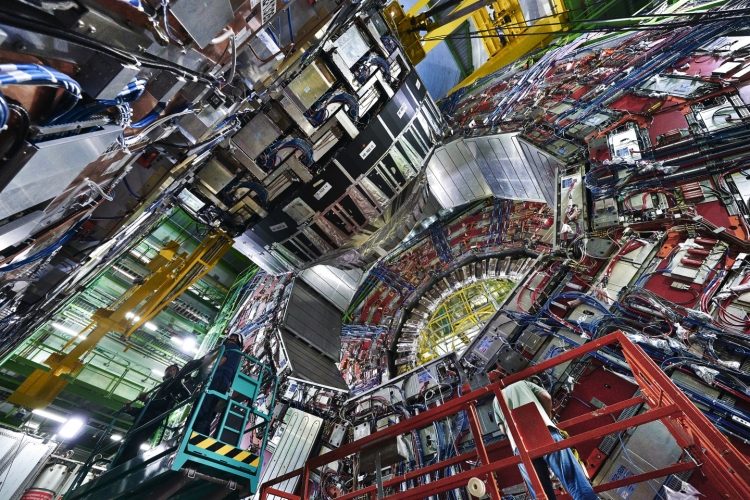
Immediately after CMS was brought into a safe state on 18 March, planning for a controlled restart began, with the objective of protecting all people working at the CMS Experiment site (Point 5, P5) as effectively as reasonably possible. Physical distancing, the use of face masks (type I for the protection of others), and strict hand hygiene were required for any person entering the site.
With the number of new infections going down in the host states, and with their COVID-19 restrictions being gradually lifted, on 5 May the CERN directorate announced a plan for a gradual restart of CERN under strict health and safety measures. This restart will have several phases, with increasing numbers of daily accesses permitted. In the preparatory phase, until 18 May, a daily limit of about 600 will be set on the number of persons accessing all physical CERN sites. From 18 May onwards, the plan is to increase this daily limit by about 500 every Monday, so that, after 12 weeks, there will be no additional access conditions, other than the requirement to have completed the "COVID-19 - Health & Safety Measures at CERN" course already available at lms.cern.ch. However, tele-working whenever possible and participation in meetings via video connection will remain standard practice at CERN until further notice, so the number of people simultaneously on CERN sites is expected to be remain very substantially lower than in the pre COVID-19 era.
At CMS, prior to 18 May a few critical path focused work packages have been prepared for pioneering the later opening of all CMS main technical areas. These work packages include: Cathode Strip Chamber removal/electronics refit/re-installation; Gas Electron Multiplier assembly and testing; upgrades of the beam pipe, pixel detector, and luminosity monitors, as well as component testing for the major tracking and calorimetry upgrades that will be installed after LHC Run 3. To allow detector commissioning runs under physical distancing conditions, a “dispersed control room” is envisaged, incorporating multiple adjacent rooms around the cramped existing control room and trying to maximise the already effective use of remote participation. All of these projects should be going forward smoothly by the end of May.
As the number of people on site increases, more work packages will be authorized. The exact management of the limitation of people present on CERN sites, and the details of the authorization process, are still under discussion. Additional CMS internal work packages will be started at P5, and in parallel some urgent work packages of the technical groups will be resumed. For the CMS labs and workplaces not at P5, the idea is to re-activate each one in turn using a selected high priority work-package as a pilot study for anti-COVID-19 precautions. Once these precautions are successfully established, additional activities in each lab or workspace can be authorised relatively simply, taking care not to neglect any work-package specific risks, whether COVID-19 related or not.
All activities will be started with the locally available teams, so that initially no CMS collaborators or contractors will be requested to travel to CERN from outside the region. From 18 May onward, we expect that each week an additional 30 CMS members will be authorized for daily access. We are also working on procedures for others to have occasional limited-time access within the general limitations.
- Log in to post comments

